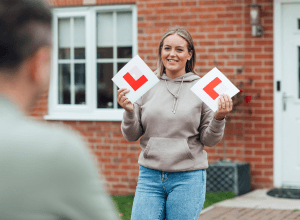This week brought remarkable progress for Deaf communities worldwide, from groundbreaking funding initiatives to historic television broadcasts. These developments showcase how authentic representation and accessibility are transforming media, sports, and public services. Here are the latest updates making waves in Deaf culture and accessibility.
Deaf Artists win Funding Boost

This targeted funding addresses systemic barriers faced by multiply marginalized deaf creators while centering intersectional voices often excluded from mainstream deaf representation. The initiative represents a crucial shift in recognizing that deaf community leadership must reflect diverse racial and ethnic perspectives, moving beyond historically white-dominated deaf institutional narratives.
The grants cover everything from ASL poetry to visual storytelling, with applications emphasizing lived experiences over formal credentials. The grassroots funding model challenges traditional grant-making by prioritizing community knowledge and cultural authenticity over institutional affiliations. By explicitly addressing the intersection of race and deafness, the program acknowledges that BIPOC deaf artists face compounded discrimination in accessing resources. The initiative also builds creative pipelines that can influence broader deaf cultural production. As one organizer noted, this enriches the entire community’s artistic expression.
We hope the funding could catalyze a new generation of deaf artists whose work reflects the full spectrum of deaf experiences.
Deaf Films Premiere on UK Television
UK broadcaster Lumo TV commissioned three short films by Deaf filmmakers, marking a significant expansion of Deaf-led content on national television. While modest in scale, the project establishes crucial precedents: dedicated funding streams for Deaf artists, professional development opportunities, and mainstream visibility beyond the festival circuit. By placing Deaf storytellers at the creative helm, these shorts can portray authentic lived experiences without the distortions often introduced when hearing writers direct Deaf-centered narratives.
The commission represents creative control. Deaf filmmakers bring cultural and linguistic nuance that hearing directors, however well-intentioned, often miss. The project also creates employment opportunities throughout the production chain, from Deaf actors to sign language interpreters to crew members familiar with on-set Deaf communication needs. Industry advocates note that such initiatives help dismantle stereotypes while building sustainable careers in media. The films will air during prime viewing hours, ensuring maximum audience reach.
This visibility matters: when Deaf stories are told by Deaf creators on mainstream platforms, it shifts public perception from seeing deafness as a limitation to recognizing it as a cultural identity with its own rich narrative traditions.
US Deaf Soccer Makes TV History

This doubleheader with the U.S. women’s national team represents more than a game; it’s a breakthrough in sports equity. For athletes preparing for the Deaflympics, this exposure brings legitimacy that could attract sponsorships, higher-level coaching, and new fans.
The broadcast celebrates a breakthrough moment: Deaf soccer receives the national television coverage it deserves, showcasing the sport’s competitive excellence and international following. Players demonstrate exceptional spatial awareness and visual communication systems on the field, offering viewers a masterclass in teamwork that transcends traditional verbal coordination. The match will feature innovative on-screen graphics explaining visual referee signals and team communication methods, enriching the viewing experience for all audiences. This visibility opens doors for young deaf athletes who can now see themselves represented on the biggest sports stages. The broadcast sets a new standard for how sports media can showcase elite athletics across all abilities. As one player emphasized, they’re playing soccer at an elite level, using visual communication methods that enhance rather than limit their game. We hope the exposure inspires a new generation of fans and athletes who recognize that excellence in sports comes in many forms.
Celebrity Wedding Showcases ASL Inclusion
CODA actor Daniel Durant and “Dancing with the Stars” professional Britt Stewart married in California with ASL integrated throughout the ceremony.
Durant signed his vows, interpreters supported hearing guests, and Deaf West Theatre’s David Kurs officiated. Beyond celebrity interest, the wedding modeled inclusive practices for mixed Deaf-hearing celebrations. The couple’s choice to center ASL throughout their ceremony beautifully demonstrates how love naturally embraces all forms of expression, showing that when two people commit to each other, they create a shared language that welcomes everyone into their joy.
UK Revolutionizes Driving Test Access

The DVSA plans to extend this model to practical driving tests and other services. Success here could prompt other government departments to embed sign language access rather than treating it as an add-on. The initiative also demonstrates how technology, when properly implemented, can eliminate longstanding institutional barriers. Who knew that making things accessible from the start could be easier than fixing them later?
Weekly Trends
When Deaf communities lead their own narratives and innovations, everyone benefits. From arts funding that centers intersectional voices to mainstream broadcasts that celebrate Deaf athletics, this week demonstrates that accessibility isn’t about accommodation but about recognizing the value that diverse perspectives bring to our shared experiences.






